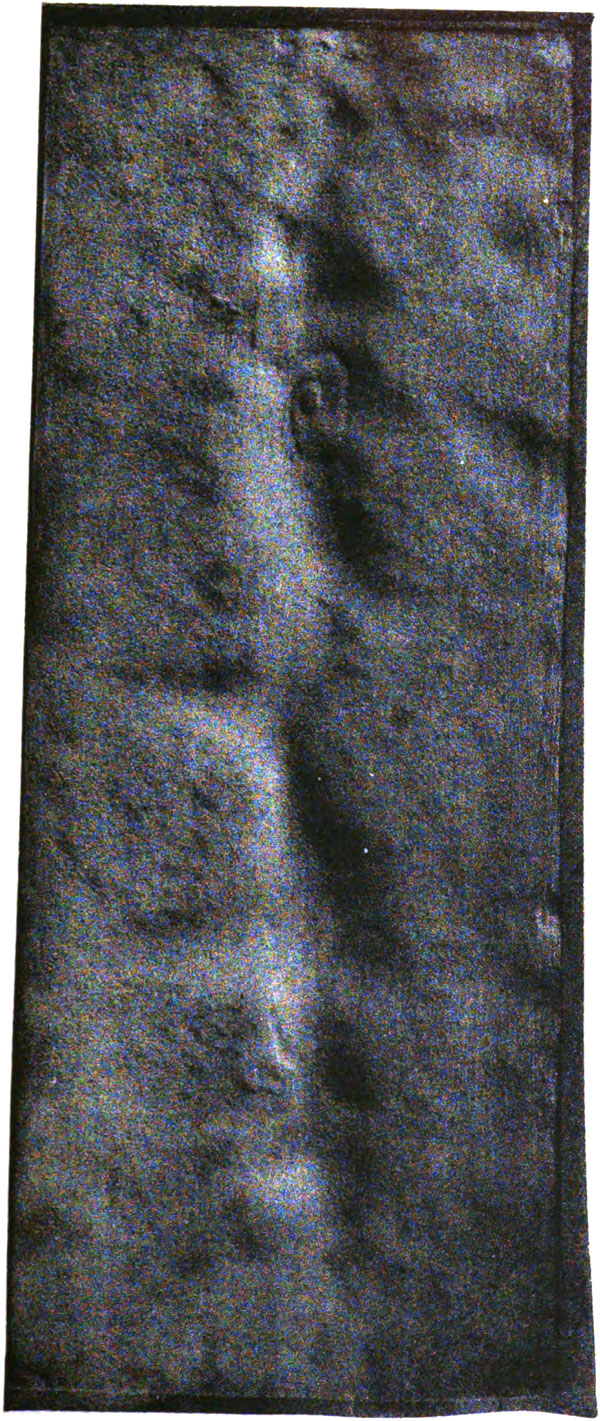on sheets of lead, 1

*
Plate III, Effects of superficial expansion on sheets of lead.
Experiment No. 1.—The first sheet I experimented upon was a piece of old sheet lead originally about 6 lb. to the foot that had been used in forming a down-spout. ¶ I flattened it out, which produced lines of weakness in the old creases. It measured 1 foot 6 inches by 6 inches. I nailed it down by the edges to a deal board, and played the flame of a blowpipe over it. The lead rose in a longitudinal ridge traversing the centre of the plate, with transverse ridges or spurs branching from it. I pressed down the lead to the board between the protuberant parts, and heated and reheated it. The ridges became more and more developed until they assumed the appearance given in the illustration (Plate III). The greatest elevation of the ridge was 1/4 inch. At one part the metal was by accident partially melted, forming an elliptical depression. The experiment lasted over three evenings.
*
Ink-photos from plaster casts of the sheets of lead experimented upon...
illustrating Chapter IV. Mechanical effects of expansion by heat as determined by experiment on various materials.
ex Thomas Mellard Reade (1832-1909, *). The Origin of Mountain Ranges considered experimentally, structurally, dynamically, and in relation to their geological history. London, 1886
tags: down-spout; orogeny; T. M. Reade, The Origin of Mountain Ranges (1886)